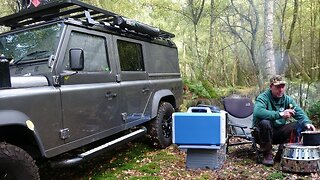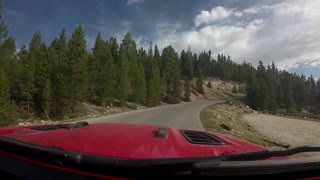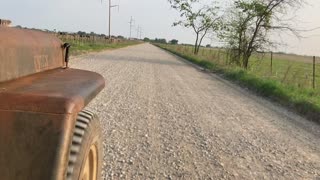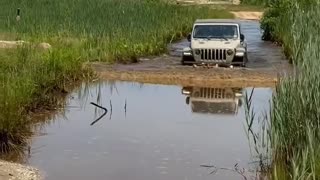Offroad Jeep Driving & Parking
Offroad Jeep driving and parking is an exciting and challenging activity that allows enthusiasts to explore rugged terrains and navigate through various obstacles using a Jeep or other off-road vehicles. Here are some key aspects to consider when engaging in off-road Jeep driving and parking:
Vehicle Selection: Choose a suitable off-road vehicle, such as a Jeep Wrangler, that is equipped with 4WD (Four-Wheel Drive) capabilities, high ground clearance, and durable off-road tires. Ensure that your vehicle is in good mechanical condition before embarking on any off-road adventures.
Safety Precautions: Safety should be a top priority when off-roading. Always wear your seatbelt, and consider additional safety equipment like helmets and roll bars for extreme terrain. Carry necessary safety gear such as a first-aid kit, fire extinguisher, recovery equipment (e.g., tow straps, winch), and tools.
Know Your Terrain: Familiarize yourself with the off-road terrain you plan to traverse. Different terrains require different driving techniques. Be prepared for mud, rocks, sand, steep inclines, and water crossings.
Trail Research: Research the off-road trails and areas you intend to explore. Maps, GPS devices, and trail guides can help you navigate and stay on designated routes. Respect trail ratings, and avoid trails that are beyond your skill level.
Driving Techniques:
Low Range and 4WD: Engage low-range and 4WD when necessary for better traction and torque in challenging terrain.
Proper Tire Pressure: Adjust tire pressure to suit the terrain. Lower pressure provides better grip on soft surfaces like sand, but remember to reinflate when returning to regular roads.
Throttle Control: Use gentle throttle inputs to maintain traction and avoid spinning the wheels excessively.
Braking: Avoid sudden braking; instead, use engine braking and gentle brake applications to control your descent on steep inclines.
Obstacle Negotiation:
Rock Crawling: When tackling rocky terrain, choose your line carefully and use your vehicle's approach and departure angles to your advantage.
Mud and Water Crossings: Approach mud and water crossings cautiously, maintaining a slow and steady pace to prevent getting stuck or causing damage to your vehicle.
Sand Dunes: Lower tire pressure for sand dune driving and maintain a consistent speed to prevent getting bogged down.
Parking Off-Road:
Look for a level and safe spot away from the trail where your vehicle won't obstruct others.
Apply the parking brake, put the vehicle in gear (manual transmission) or "Park" (automatic transmission).
Consider using wheel chocks or rocks under your tires to prevent the vehicle from rolling on uneven terrain.
Environmental Responsibility: Respect the environment by staying on designated trails, avoiding sensitive areas, and packing out all trash. Leave no trace and minimize your impact.
Group Off-Roading: If possible, go off-roading with a group. It's safer and more fun, and you can receive assistance if needed.
Emergency Preparedness: Always inform someone of your off-roading plans, carry communication devices (like a two-way radio or satellite phone), and be prepared for emergencies.
Offroad Jeep driving and parking can be a thrilling and rewarding hobby when done responsibly and safely. Always prioritize safety, the environment, and the enjoyment of the great outdoors.
-
 2:19
2:19
Aerial Louisiana
3 years ago $0.02 earnedJennings Oil & Gas Park
29 -
 3:06
3:06
Jeep life
1 year agocamping without the jeep
131 -
 14:28
14:28
Bushwacker Overland
5 months agoPortable Power | Overlanding, Car Camping & Offgrid Living
2 -
 14:30
14:30
Gladiator Overlanding
2 years agoJeep Drive Around Turquoise Lake (Aug/2020)
24 -
 0:33
0:33
FunShineJeepGirl
3 years agoGetting Dirty & Having Jeep Fun
691 -
 1:29
1:29
Rusty Relics
1 year agoEvening Jeep Drive. 1948 CJ2A
7 -
 0:54
0:54
PayItForward
3 years agoJEEP Gladiator Marsh Driving
1.72K -
 11:01
11:01
Sons of Speed
3 years ago $0.01 earnedJeep Grand Wagoneer, Wrangler 4xe & Wrangler 392 Concept
69 -
 30:09
30:09
Low Buck Builds
5 months ago $0.01 earnedMy First Offroad Trip In The Low Buck JEEP TJ
131 -
 26:54
26:54
MarksTowingandRoadside
1 year agoMark's Towing & Roadside. Towing a 1995 Chevrolet CK 1500
2